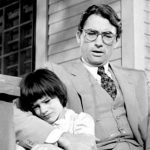 Mysteries
Mysteries  Mysteries
Mysteries  Music
Music 10 Musicians Who Changed How Everyone Plays Their Instruments
 Humans
Humans 10 Inventors Who Died Awful Deaths in Their Own Creations
 Animals
Animals 10 Ways Animals Use Deception to Survive
 Movies and TV
Movies and TV 10 Misdirections Directors Used to Manipulate Actors
 Politics
Politics The 10 Boldest Coup Attempts of the 21st Century
 Weird Stuff
Weird Stuff 10 Things That Would Have Killed You in the Old West
 Books
Books 10 Pen Names More Famous Than Their Authors
 Creepy
Creepy 10 Unnerving Legends from Around the World
 Movies and TV
Movies and TV 10 Amazing Lead Actor Ideas for Superhero Movies
 Mysteries
Mysteries 10 Bizarre, Little-Known Phenomena
 Music
Music 10 Musicians Who Changed How Everyone Plays Their Instruments
 Humans
Humans 10 Inventors Who Died Awful Deaths in Their Own Creations
Who's Behind Listverse?

Jamie Frater
Head Editor
Jamie founded Listverse due to an insatiable desire to share fascinating, obscure, and bizarre facts. He has been a guest speaker on numerous national radio and television stations and is a five time published author.
More About Us Animals
Animals 10 Ways Animals Use Deception to Survive
 Movies and TV
Movies and TV 10 Misdirections Directors Used to Manipulate Actors
 Politics
Politics The 10 Boldest Coup Attempts of the 21st Century
 Weird Stuff
Weird Stuff 10 Things That Would Have Killed You in the Old West
 Books
Books 10 Pen Names More Famous Than Their Authors
 Creepy
Creepy 10 Unnerving Legends from Around the World
 Movies and TV
Movies and TV 10 Amazing Lead Actor Ideas for Superhero Movies
10 Awesome Cameos of Writers in Movie or Television Adaptions
Cameos are wonderful nudges filmmakers give their audiences as a little treat to thank them for their patronage. It’s even better when writers—who get little enough love for the indispensable role they provide to the entertainment industry—are lucky enough to get face time on the small and silver screens. Better still when the writer is the one who created the characters and the world the viewer is enjoying.
Stephen King is the undisputed king—pun intended—of such cameos, appearing in six movies and nine television miniseries based on his books and short stories. Here are 10 more of the best such cameos.
Related: Top 10 Most Bizarre Movie Casting Ideas
10 Charlaine Harris in True Blood (2008–2014)
Charlaine Harris already had two successful mystery series under her belt when, in 2001, she embarked on a new series about Sookie Stackhouse, a waitress with telepathic powers in a world where supernatural creatures—including vampires—exist. In this world, synthetic blood called Tru Blood has been developed that allows vampires to feed on something other than a human jugular, and they develop an uneasy co-existence with humans. Variously called the Sookie Stackhouse Series or the Southern Vampire Mysteries, HBO, however, turned it into a hit television series as the True Blood Series.
Harris reportedly was used as an extra a few times in the HBO series, but only two cameos were significant enough to get much attention. The first was in the second season finale called “Beyond Here Lies Nothin’.” She appeared as a patron at the bar Merlotte’s, where she says, “Well, I certainly never expected anything like that to happen here.” The second cameo was in the series finale at the end of the seventh season. During the filming of the infomercial for the True Blood beverage, the camera panned around the studio and stopped briefly on a woman working the teleprompter. That’s Harris.[1]
9 James Dickey in Deliverance (1972)
James Dickey was considered one of the most important mid-20th-century poets in America, garnering such prestigious awards as the Order of the South, the National Book Award for Poetry, the Guggenheim Fellowship, and the Melvin Cane Award. He also became the 18th United States Poet Laureate in 1966. His first novel, Deliverance, was published in 1970, and he wrote the screenplay for the 1972 film. Which was the spark for conflict on the set.
The seasoned director and producer, John Boorman, cut the first 19 pages of Dickey’s script, and Dickey took issue with that. It was alleged that Dickey would sit in a bar and tell anyone who’d listen about how Boorman was ruining his movie. “They’re not doing my book,” he would shout. Dickey would appear on the set drunk and bullying the actors, and one day he got in a fistfight with Boorman. The director emerged with a broken nose and four lost teeth, and Dickey was ejected from the shoot. Dickey and Boorman, however, reconciled, and Boorman even allowed Dickey to come back to do a cameo at the end of the film. Dickey played the memorably obnoxious Sheriff Bullard.[2]
8 Diana Gabaldon in Outlander (2014–Present)
Diana Gabaldon was writing technical articles and software reviews for computer magazines when, in 1988, she decided to write a novel “for practice.” She had extensive experience in research, and she thought historical fiction would be the easiest to research. The idea for Outlander occurred one evening while watching a rerun of a Dr. Who episode, “The War Games.” It was the final episode of the sixth season and the final appearance of Patrick Troughton as Dr. Who.
One minor character caught her attention, mostly because he was in a kilt. He was a young Scotsman from 1745, and Gabaldon began to shape a story around eighteenth-century Scotland. Eventually, a female protagonist took over the novel, and the only way to explain her more modern sarcasm was to place her in modern times and time travel back to the 1700s.
Gabaldon was involved in Starz’s television production, and she even wrote the screenplay for one of the episodes (“Vengeance is Mine,” Season 2, Episode 11). All the seasons of the series were based on Gabaldon’s books, even publishing new books to continue the show’s storyline. Her cameo was in the first season, in the fourth episode called “The Gathering.” She has a small speaking part as Iona MacTavish.[3]
7 Peter Benchley in Jaws (1975)
As the son and grandson of successful writers, Peter Benchley gravitated toward that vocation, publishing a travel memoir, reporting for the Washington Post, editing for the television version of Newsweek, and speech writing for the Lyndon Johnson White House—all in his first decade after college. But by 1971, he was struggling to support a wife and two children with freelance writing.
Desperate, Benchley was making the rounds among New York publishers, pitching story ideas, one of which was about a great white shark terrorizing a small east coastal town. Benchley got the idea from a news story about a fisherman catching a 4,550-pound shark off Long Island. The idea caught the attention of an editor at Doubleday, and Benchley wrote a novel that sold 20 million copies and stayed on the New York Times Bestseller List for 44 weeks. Steven Spielberg scooped up the rights and directed a movie that would ultimately gross $470 million and become the first true summer blockbuster.
In the film, Benchley’s cameo came when the public is first made aware a man-eating shark is swimming along the beach. Benchley is a television reporter on the beach with a crowd of people behind him. His wife, Wendy, and his daughter are among the crowd. His cameo is apparently longer because there’s a still photo of him interviewing Matt Hooper, played by Richard Dreyfus, which did not survive editing. This was also the case in another scene where Benchley chased down and confronted Sheriff Brody, played by Roy Scheider. This scene is said to have been shot several times but still ended up on the cutting room floor.[4]
6 Jordan Belfort in The Wolf of Wall Street (2013)
In the late 1980s, Jordan Belfort and a friend bought out Stratton Securities and founded Stratton Oakmont, Inc., the largest over-the-counter (between two parties and not on the N.Y. Stock Exchange) brokerage firm in the U.S., specializing in highly speculative (risky) penny stocks (small companies whose shares sell for under a dollar). The firm was essentially a call center called a boiler room where salespersons made high-pressure sales calls to coax investors into purchasing potentially fraudulent or risky securities.
The salespersons would “cold call” an investor, telling them about a great deal where stocks of a certain company were low but were about to skyrocket in value. They wouldn’t give the investor time to research this deal or even look into the reputation of Stratton Oakmont, Inc. At its peak, Belfort’s company employed 1,000 brokers selling over $1 billion in securities. After he was indicted in 1999 for securities fraud and money laundering, Belfort admitted they had manipulated the stocks of 34 companies, costing investors $200 million. He was sentenced to four years in prison and served 22 months.
In 2007, Belfort published his memoir called The Wolf of Wall Street, and Martin Scorsese directed the film of the same name. Belfort’s cameo appears at the end of the film just after the protagonist, played by Leonardo DiCaprio, is released from jail and hosting seminars on stock trading. Belfort himself stands on a stage and introduces DiCaprio’s character and says, “My friend Jordan Belfort is the single, most baddest motherf***er I have ever met.”[5]
9 Jenny Han’s Adaptations
Jenny Han published her first young adult novel, Shug, while still in grad school in 2006 and went on to publish a YA romance trilogy beginning with The Summer I Turned Pretty in 2009. The books were New York Times bestsellers and launched Han into YA superstardom. After co-writing another YA trilogy, Burn for Burn, with bestselling novelist Siobhan Vivian, Han published the first book of a third series, To All the Boys I’ve Loved Before in 2014, becoming an instant smash.
Han began the pivot to film and video productions when To All the Boys was adapted into a movie for Netflix in 2018. Han was an executive producer in the film and garnered a cameo, playing a chaperone in the background at Lara Jean’s freshman-year homecoming dance. It’s an apt cameo. Her fans—which are legion—consider her the right person to chaperone her work in the visual arts.
In the sequel, To All the Boys: P.S. I Still Love You, she again was executive producer and has a cameo, this time as a teacher consoling a girl in the cafeteria on Valentine’s Day. She produced the third in the trilogy, To All the Boys: Always and Forever, and appears as School Principal Cho, who hands Lara Jean a special award for attendance. Han created, wrote, and executive-produced a spin-off series, XO, Kitty, also on Netflix; she is also a co-showrunner with Sascha Rothchild.
Han started building her own production company, Jenny Kissed Me, and, after signing a movie and series deal with Amazon Prime, became creator and co-showrunner with Sarah Kucserka on a series based on her The Summer I Turned Pretty. The series debuted in 2022, and because Han is constantly interacting with fans on Instagram and Facebook, she decided to honor numerous requests to include Taylor Swift songs by successfully signing four songs from Taylor Swift’s Lover album. They were sprinkled throughout the first season. And, yes, she has another cameo, this time appearing at the debutante ball’s champagne tower, pulling a glass from the top. The second season has already begun to stream. [6]
4 William Peter Blatty in The Exorcist (1973)
It’s surprising to note that before William Blatty penned The Exorcist, he was better known for writing humor and was one of Hollywood’s hottest comedy writers. In 1961, he won $10,000 on the television game show You Bet Your Life, hosted by Groucho Marx, and he used the money to quit his job and embark on a writing career. Three years later, he collaborated with Director Blake Edwards to write the sequel to the hit The Pink Panther (1963), this one called A Shot in the Dark (1964), considered by many to be the best of the early Pink Panther series. He collaborated on three more Blake Edward comedies and went on to pen comedy scripts for Zero Mostel, Warren Beatty, and Danny Kaye.
By the late 1960s, Blatty’s comedy work began to wane, and when his mother, Mary, died in 1967, Blatty found himself contemplating life’s ultimate questions. He found solace in a renewed commitment to his Catholic faith. He tinkered with a story idea around exorcism when he remembered a 1949 case where a Catholic priest exorcized a 14-year-old boy of a malevolent demon.
He wrote and published the bestseller The Exorcist in 1971, which became a global hit, then wrote and produced the movie. Both the book and the movie ended his career in writing humor. “The sad truth is that nobody wants me to write comedy,” he said in an interview. “The Exorcist not only ended that career; it expunged all memory of its existence.”
Blatty’s cameo in the film comes near the opening, where a film was being shot at Washington University starring Regan’s Mom, played by Ellen Burstyn. The film’s director, Burke Dennings, stepped out of his trailer to be accosted by a producer holding up a script and asking, “Is this scene really necessary?” That’s Blatty.[7]
3 Margaret Atwood’s Adaptations
Margaret Atwood has been writing since she was five years old, publishing poetry collections in the ’60s that exalted the natural world and disparaged materialism. Beginning in 1969 with The Edible Woman, Atwood turned to novels, all centered around women searching for their identity and role in the world. The novels have garnered numerous literary awards, including the prestigious 2000 Booker Prize for her novel The Blind Assassin. Her 1985 novel The Handmaid’s Tale won the Arthur C. Clarke Award and the Governor General’s Award. It has found its way onto the stage as an opera and in movie and television adaptions. The sequel, The Testaments (2019), earned Atwood another Booker Prize, this time as a co-winner.
In 2017, Hulu began broadcasting Atwood’s The Handmaid’s Tale as a series, and Atwood appeared in the very first episode of season one. In a flashback scene, June/Offred is at a school where she and fellow handmaids are indoctrinated on their new duties by instructors called Aunts. Another handmaid, Janine, talks back to Aunt Lydia—a particularly loathsome character—and Janine is shocked by a cattle prod, then taken away. When Janine returns, it’s revealed she not only had an eye gouged out, she was gang-raped, an ominous portent of what’s to come as rape is an integral part of being a handmaid. When Aunt Lydia tries to force the handmaids to blame Janine for her rape, June refuses. She is then slapped by another aunt, this one played by Atwood. Hulu has announced there will be a season six.
That same year, Atwood’s 1996 novel Alias Grace, about a Canadian maid convicted of a double murder, was adapted into a six-part miniseries, first premiering on the Canadian Broadcasting Corporation, then on Netflix a few weeks later. Atwood has a cameo in the fourth episode, where the main character, Grace, accompanies her employer, Thomas, and his housekeeper Nancy to church. Clearly, Thomas and Nancy are having an affair, and another churchgoer shakes her bonnet-covered head in disgust and says, “It’s an outrage.” That, again, is Atwood.[8]
2 Jeff Lindsay in Dexter (2006–2013)
Jeff Lindsay is the pen name of Jeffry P. Freundlich, a Miami native who worked literally dozens of jobs, everything from dishwasher to steel worker to greeting card salesman to teacher. In the early 1980s, he moved to Hollywood to try his hand at the film industry while working the L.A. club scene singing and strumming his guitar. He worked four years for comedian Steve Allen and six years as a story analyst and script doctor. Together with his wife, Hilary Hemingway (niece of Ernest Hemingway), he wrote the scripts for numerous sitcoms and feature films. He wrote 22 plays, a few of them musicals, that were staged in New York, London, and California.
And in the 1990s, he tried his hand at writing novels, penning books of suspense and science fiction with his wife. When he published a book about a serial killer who’s a blood-spatter analyst for the Miami-Dade Police Department by day and hunting other killers by night, Lindsay knew he’d hit upon an interesting concept that would sell. His daughter suggested he call it Pinocchio Bleeds, but his agent nixed that title. Thus was born Darkly Dreaming Dexter in 2004, and when Showtime picked it up as a series, just Dexter.
The first season followed the book fairly closely, but the subsequent seven seasons had nothing to do with any of Lindsay’s Dexter books (there were eight in all). But that was fine with the author. He recognized the different needs of the literary and television worlds. Nor did he want to be involved in the production, being happy to visit the set occasionally. He said he’d spent a decade in the zoo that was Hollywood, and he was happy to remain in southern Florida.
The one exception was when he was coaxed back to Hollywood for a cameo in the 10th episode of the third season. In it, Lindsay plays Vice Officer Jeffries, who’s guarding a witness’s hospital room. He has a speaking part, talking to Detective Angel Batista before and after he interviews the witness. Lindsay told reporters that he did the cameo to demonstrate his support for the show. He said Hollywood tends to ruin creative works, but the series producers “really know what they’re doing.”[9]
1 Lee Child’s Reacher Adaptations
Lee Child is the pen name of Jim Grant, who spent 18 years working as a director for show presenters at Granada Television in Manchester, England. There he was involved with more than 40,000 hours of programming, writing trailers, commercials, and news stories. And when he was laid off in 1995, he bought pencils and paper and continued writing, this time for himself. Two years later, he published Killing Floor, his first Jack Reacher novel, and won both the Anthony and Barry Awards for crime fiction. But it was actually his sixth novel, One Shot, that was the basis for the first adaption of his work, Jack Reacher (2012), starring Tom Cruise.
In the movie, Jack Reacher is arrested for defending himself from assailants, and when released, Lee Child is the desk sergeant handing Reacher back his personal belongings. Tom Cruise reprised the role in Jack Reacher: Never Go Back (2016), based on the 18th Reacher novel of the same name, and Child has yet another cameo. As usual, Reacher is wanted by the authorities, and when he needs to take a flight, he steals another passenger’s ID. Child plays a TSA agent that stops Reacher to examine his ID for a “Jeffrey Scott” and, after a shrug, tells Reacher to have a nice flight.
Fans and Lee Child were unhappy with Tom Cruise’s depiction of Reacher since Child wrote that Reacher was a huge, six-foot-five, muscular man with “hands the size of dinner plates.” For Amazon’s Reacher series, based on the first Reacher novel, Killing Floor, they cast Alan Richson, and while he’s only six foot two, he certainly has the imposing physique of the character.
In the first episode, Reacher visits a diner known for good peach pie. In the finale of the first season, Reacher returns to the diner, and as he enters, a patron steps around him, saying, “Excuse me.” That’s Lee Child. Amazon has announced the premiere of the second season of Reacher will happen this year. [10]
+ BONUS: Ian Fleming in From Russia with Love (1963)
This one is included because it would be really cool if Ian Fleming was immortalized, however briefly, in a James Bond film. Whether his appearance is real or just another urban legend has been debated for decades, yet still no definitive answers exist. The scene in question is in the movie From Russia with Love (1963) at the 1:16:03 timestamp. The scene takes place just after a major character is murdered on the Orient Express, and an exterior shot has the train pulling away from the camera. In the field beside the tracks is a man in blue pants and a white sweater with what looks like a white shirt with a collar underneath. The man is also wearing a ballcap that obscures most of his facial features and hair, even when he turns his face directly at the camera.
Ian Fleming frequently appeared on the sets of From Russia with Love, and there are at least two or three publicity photos that show Fleming on the set when they were filming the Orient Express exterior scenes. What’s more, Fleming, that day, was wearing dark pants, a white sweater with a collared shirt underneath. Fleming is also shown using a cane on the same day as the Orient Express shooting.
The man in the scene is holding two sticks, but they are much longer than the cane Fleming was using. The man seems to have big ears like Fleming, but he also appears stouter and shorter than Fleming’s six-foot height, but there’s little near the man for comparison. And the man’s hair seems much darker than Fleming’s salt-n-pepper locks, but there are, of course, wigs. The head of a cow appears briefly in the shot, and it has been speculated the man could have been a local farmer, using the sticks to keep his cows away from the train. But anyone who’s been on a set knows that it’s tightly controlled, and no one is allowed in a shot unless they were meant to be in the shot. If a local wandered into the scene, the director would likely have the train backed up and shot again, with the man and the cows tucked out of the way.
High-resolution screencaps have been taken of the man’s face when he turns toward the camera, but the results were less than definitive. Some have speculated that the fact the man turns his head toward the camera makes it certain he was not an actor but a local. But Fleming was not a seasoned actor either, and he was standing at a distance with a train passing by. Any instructions a director might shout—even with a bullhorn—could easily be misinterpreted and draw the man’s attention. And neither Ian Fleming’s family nor the film’s producers have made any statement as to whether this is Fleming or not.
So the debate continues.[11]








